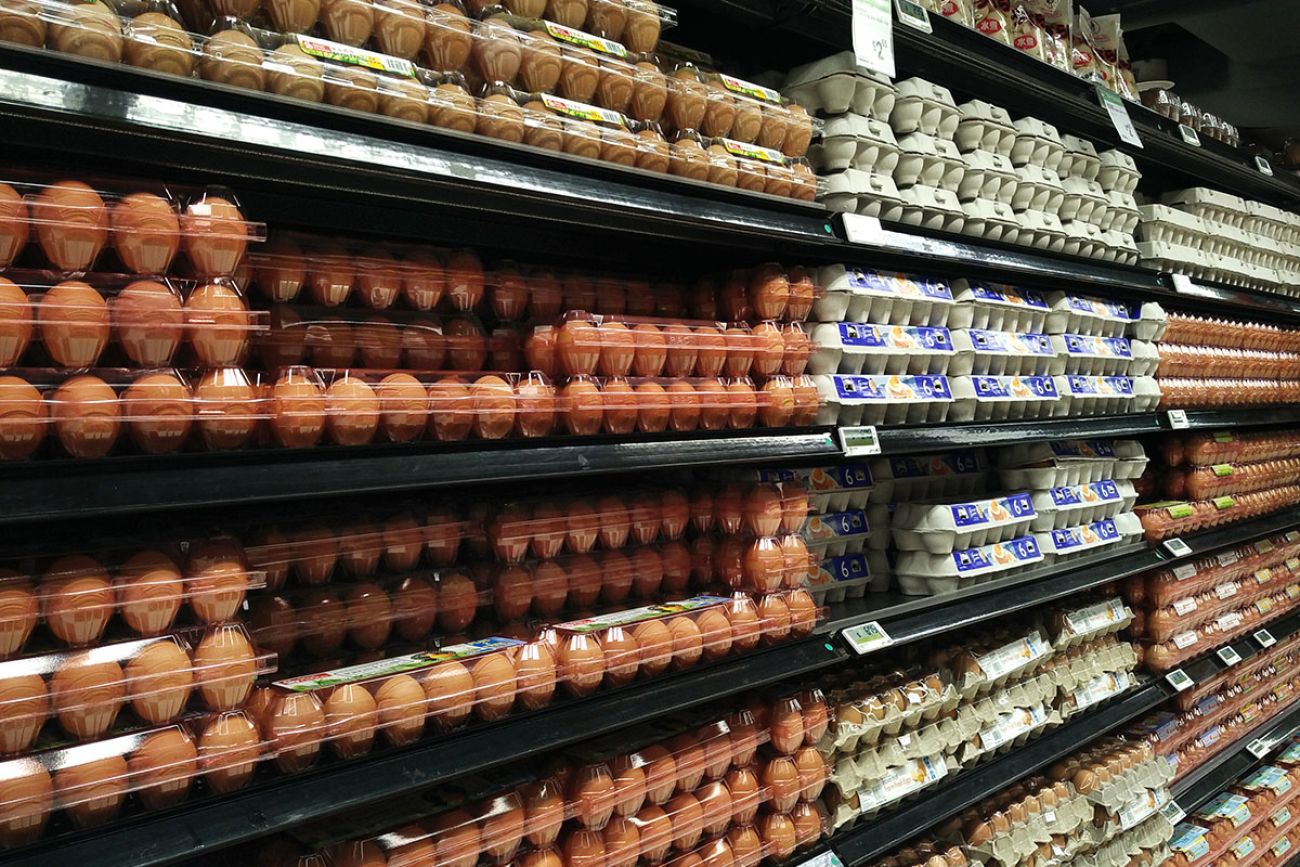Shell shocked: Why eggs are so expensive in Michigan and when it will end

- The worst bird flu outbreak in history killed 57 million chickens across the U.S., causing egg production to plummet.
- At the same time, higher costs for gas and chicken feed are pressuring farmers.
- A regular dozen eggs now cost about $5 in Michigan, compared to just under $2 a year ago. The hike is five times the average grocery cost increase.
Inflation combined with avian flu to push egg prices 60 percent higher than a year ago, and now Michigan agriculture experts say the prices may not start to drop until spring.
The difference is five times the 12 percent overall jump for grocery items, according to the latest report on consumer prices by the U.S. Bureau of Labor Statistics.
Shoppers at the state’s largest grocers are seeing even higher prices, paying up to $5 a dozen: A dozen eggs at Walmart costs about $4.72, $4.39 at Meijer and $3.69 at Kroger, according to online store advertising. Specialty grocery stores are charging closer to $8 per dozen for pasture-raised or organic eggs.
Related:
- Michigan businesses with hourly workers fret over continued pay hikes
- Used car prices are falling, but ‘seller’s market’ likely to last for years
- Bridge Michigan's Economic Dashboard
- Michigan braces for recession: What to watch, from inflation to home prices
- Value of Michigan’s largest public companies dropped by over $120B in 2022
In contrast, the retail price for a dozen eggs in January 2022 was about $1.93.
The rising costs of feeding chickens and transporting their eggs are factors for the high egg prices, but experts told Bridge Michigan the main reason for the price increase is avian flu, a virus most common among wild birds.
Over 57 million chickens were killed across the country since the beginning of 2022 as a result of the outbreak. It is the largest avian flu outbreak since 2014, the CDC reported.
“There’s a lot of uncertainty with how this latest outbreak … is going to continue to play out,” said David Ortega, associate professor for the Department of Agricultural, Food, and Resource Economics at Michigan State University.
“The good news is that once this outbreak ends, we will start to see farmers start to replenish the inventory of their birds and see egg prices come down because this is an acute supply shock,” Ortega told Bridge.
Flu outbreaks typically occur during the fall and spring as wild birds migrate between northern and southern states, said Ernie Birchmeier, livestock and dairy specialist at Michigan Farm Bureau.
Enhanced biosecurity measures like proper ventilation in facilities, limiting traffic flow and wearing clean clothing when coming in contact with the birds, prevent outbreaks.
The most efficient way for farmers to get rid of an outbreak is to depopulate their facilities, which decreases revenue for farmers. It can take up to five months for a hen to set and be able to hatch eggs again.
“If we get through [the] spring season without any major problems and those farmers are able to restock their buildings, we should have a softening in prices during the second and third quarter of this next year,” Birchmeier said.
The second largest outbreak of the avian flu occurred between 2014 and 2015, when 50 million birds were infected. Before the outbreak, egg prices were $1.93 a dozen, increasing 54 percent at their peak in fall 2015 before the outbreak ended late that year.
Michigan is one of the top egg manufactures in the country, producing over 4 billion eggs each year, according to the U.S. Department of Agriculture.
While Michigan farms haven’t been as affected by the flu compared to other states, the lack of national supply contributes to the price hikes across the country.
Roughly two-thirds of the 96.9 billion eggs produced in the U.S. were sold at retail in 2020, according to the United Egg Producers, a national egg coop for producers. About 28 percent went into food production, while the remaining eggs were sold for food service and exports.
Shoppers shocked by the price jumps should know that they may not be paying for all of the increased costs, Ortega said.
“Certain retailers are trying to absorb as much of the costs as possible because eggs are a staple item that people buy on a regular basis,” Ortega said.
Shopping with local producers — such as farm stands and locally owned stores — may save consumers money, he suggested.
Editor's note: This story has been updated to correct the numbers of eggs produced.
Business Watch
Covering the intersection of business and policy, and informing Michigan employers and workers on the long road back from coronavirus.
- About Business Watch
- Subscribe
- Share tips and questions with Bridge Business Editor Paula Gardner
Thanks to our Business Watch sponsors.
Support Bridge's nonprofit civic journalism. Donate today.
See what new members are saying about why they donated to Bridge Michigan:
- “In order for this information to be accurate and unbiased it must be underwritten by its readers, not by special interests.” - Larry S.
- “Not many other media sources report on the topics Bridge does.” - Susan B.
- “Your journalism is outstanding and rare these days.” - Mark S.
If you want to ensure the future of nonpartisan, nonprofit Michigan journalism, please become a member today. You, too, will be asked why you donated and maybe we'll feature your quote next time!




